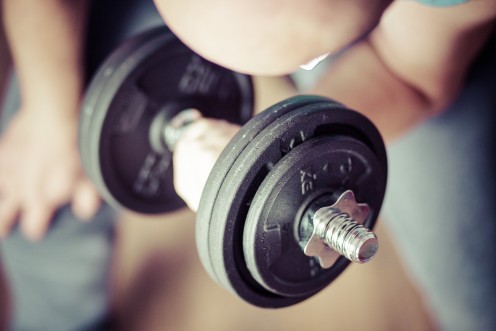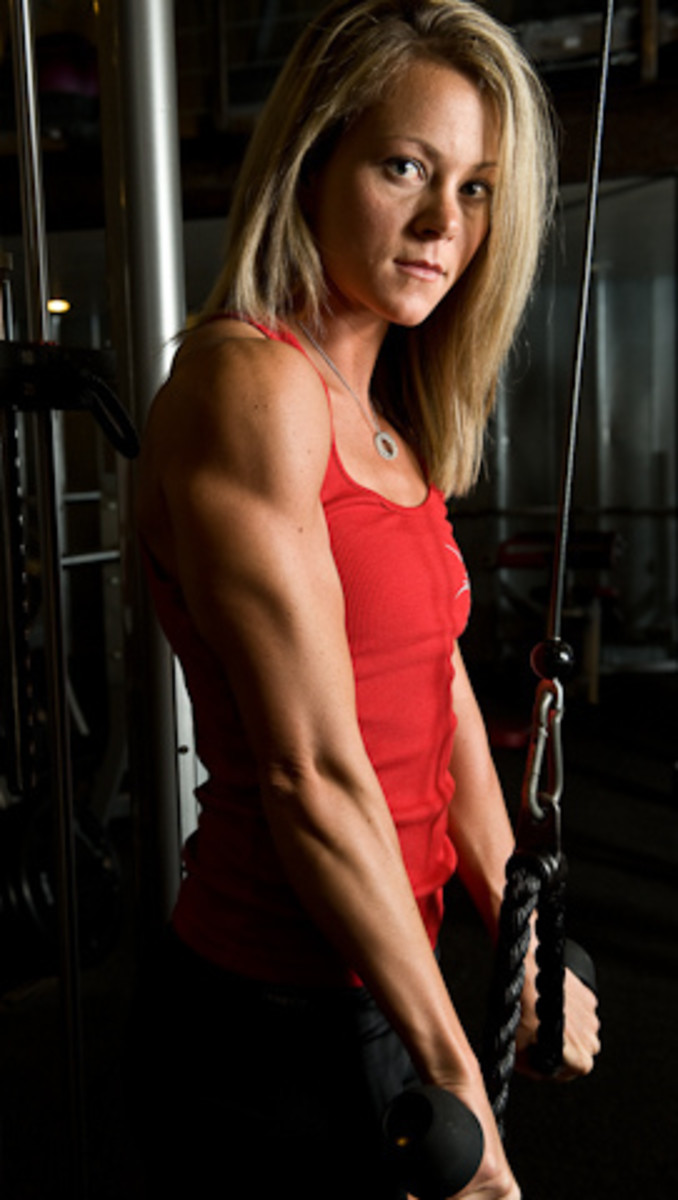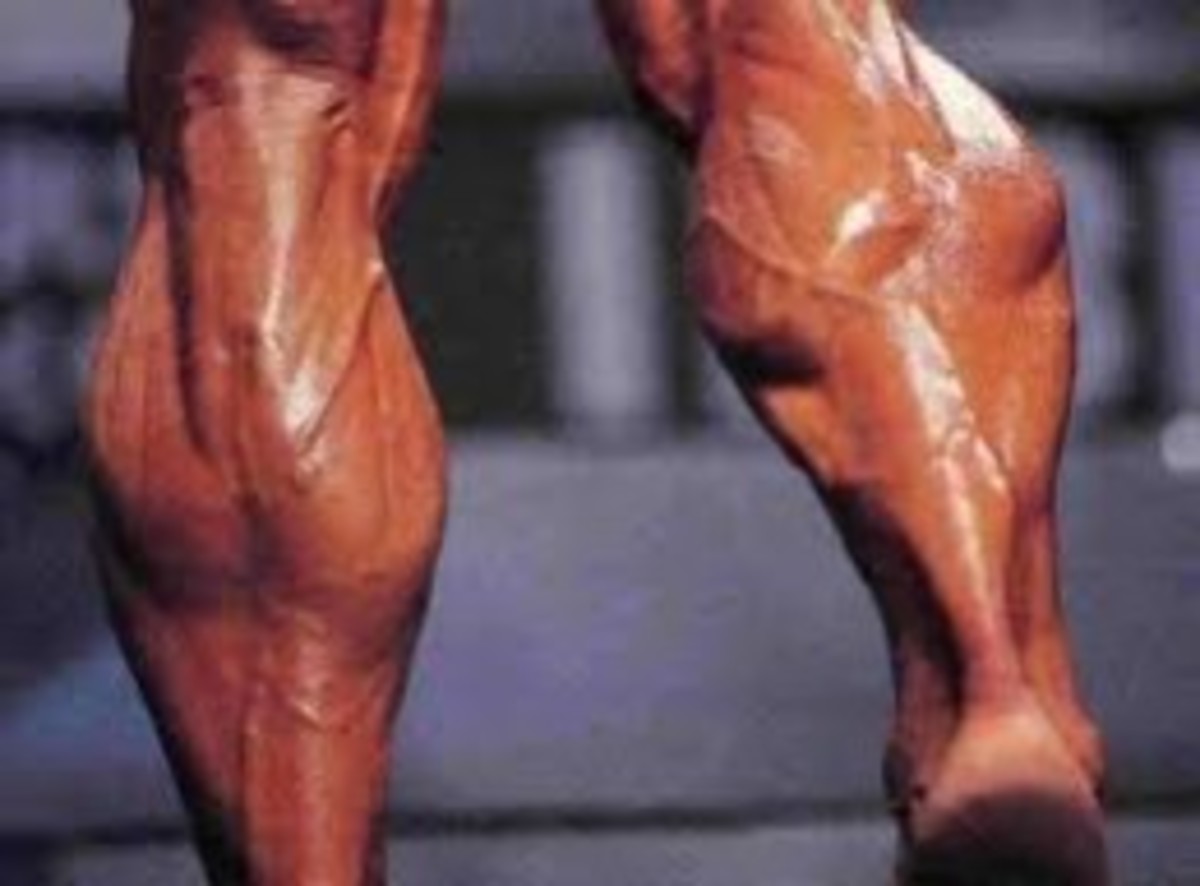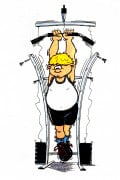How to Measure Weight Training Results

First of all, make sure you know how to perform lifting routines with proper form. Without proper form, it WILL be tricky to measure weight training results. Once you have your form down, you’re ready to start setting weight training goals. The goals can be as follows:
- Amount of weight lifted
- Number of repetitions
- Type of weight training routine performed
- Appearance and size of muscle
- Range of motion through which the routine is performed
- Isometric sticking points
- Amount of weight lifted with everyday objects
1. Keep track of how many pounds are lifted for all exercise routines. Example: lateral raises, 12 pound dumbbells. Lateral raises involve standing with arms down, holding dumbbells, then raising arms out to the side with elbows slightly bent, then lowering.
2. Keep track of how many reps are done with that particular weight.
3. Be aware of how well your form is with those reps and weight.
Amount of Weight Lifted at the Gym
If your goal is hypertrophy (increased muscle size), then an 8-12 rep maximum is required. For maximum muscle strength but not necessarily maximum muscle size, a 5-7 rep max is recommended.

For modest gains in muscle strength, and only muscle tone, do 13-20 reps max. “Max” means being unable to do more than the recommended number of reps. When you find you can, this means increased muscle strength and warrants increased pounds to achieve “muscle failure” (exhaustion) within the recommended rep range.
Number of Reps
If for lateral raises, for example, a person can only lift 12 pound dumbbells eight times, and the goal is bigger muscle, then weight training results can be measured by how many reps are completed.
Over time, eight reps will be easy and you’ll be able to throw in a ninth, then a tenth, and eventually all 12 reps. Results get measured by paying attention to the number of reps completed within a desired rep range.
Type of Weight Training Routine
An exercise can be too difficult to complete even one rep, such as a single pull-up.
Thus, the way to measure strength training progress is how high you can pull yourself off the floor, or, to put it more generally, how far into the range of motion you can perform a single rep.
A pushup is another example. If one standard pushup is impossible, then progress can be measured by how far a person can lower his body without collapsing or how many clean reps can be performed with one’s hands on an elevated platform.
Appearance and Size of Muscle
Strength training progress can be measured by measuring muscle size with a tape measure, such as biceps and quadriceps muscle. What you see in the mirror is another way.

How shirts fit is yet another way to measure weight training results. Muscle appearance can also be muscle definition, not necessarily muscle size. Again, use a mirror to check definition in ab muscle, shoulder muscle or even forearm muscle.
Range of Motion Through which the Weight Routine Is Performed
Using the lateral lift example, suppose you’re at 12 reps with the 12 pound dumbbells.
Before trying the 15 pounders, first see if range of motion can be tweaked. Lift arms a little higher than usual, and THEN see if you can complete 12 reps. If only seven are doable, you may not be ready for 15 pounders. Work this increased range of motion until you can complete 12 reps and still feel one more is possible.
How many reps you can complete with good form, through a given range of motion, will help measure weight training results. Muscles are getting stronger when an increased range of motion can be performed with the same poundage that, initially, was impossible to move through that range of motion.
Another range of motion example is lat pull-downs. Are you able to pull the bar down farther this week than last week, but with the same amount of weight?
Isometric Sticking Points
See if, for instance, you can hold your legs in the bent position on a leg press machine for three seconds before pressing back up. If not, try again a few leg sessions later.
If you can, this is weight training progress. Isometric exercise means holding a position of muscle resistance, without lengthening or shortening the muscle.
Common sticking points are the lowered position of a lat pull-down, lowered position of a bench press, middle position of a bench press and lat pull-down, the squat position of a barbell squat, the extended position of a leg extension, the midpoint of biceps curls, the arms-up position of lateral lifts, etc. Holding sticking points when previously you couldn’t is an indication of progress with your strength training.
Amount of Weight Lifted with Everyday Objects
Finally, if carrying your child around is getting easier, while your child is getting heavier, this is clear weight training progress.
- How’s carrying the garbage been, lately?
- How about carrying the “heavy” vacuum up the stairs? Is it no longer heavy?
- No longer get winded carrying a basket of laundry up the stairs?
- How about carrying grocery bags or removing luggage from the car trunk?
- Weight training progress is clearly evident in how easier it gets to perform everyday tasks.








